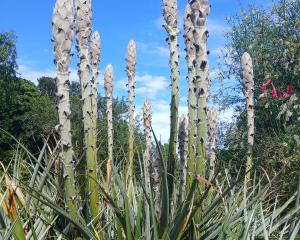Latin, explained my mother, was a dead language. For me, that was a good excuse not to learn it.
I still don't think I needed to know Horace's Naturam expellas furca, tamen usque recurret (You can drive out nature with a pitchfork, but she will return) or Virgil's line about a snake in the grass, but some Latin wouldn't go amiss these days.
It works by dividing plants into families, whose members have similar structure in their flowers and fruit.
Families are subdivided into genera, with each genus containing one or more species and sometimes sub-species. These names are always printed in italics.
A species' name may be in honour of a person - banksias commemorate plant collector Joseph Banks, who travelled with Captain James Cook - the plant's characteristics or its native name, as in alchemilla, a corruption of alkemelych, the Arabic name for the plant.
The second word is descriptive or may refer to the collector who found the plant in the wild. Thus a native broom, Carmichaelia cunninghamii, is named for botanist Allan Cunningham.
In the late 1950s, the naming system was tweaked so that cultivars had to be given vernacular names in normal (Roman) type and put in single quotation marks, although not all publications include the quote marks.
Coprosma comes from Greek and means "smelling like dung" - a reference to the smell when the leaves are bruised of some coprosmas (notably karamu or stinkwood) - repens refers to its low-growing habit and Inferno is the cultivar.
Admirable though this is, it sometimes causes the gardener frustration by renaming plants, which is why gardening books sometimes have two names, as in the staghorn fern, Platecyrium superbum syn. P. grande. The second name refers to the earlier classification.
Plant naming is an ongoing process, governed by the International Code of Nomenclature for Cultivated Plants.
The first list was published in 1953, although the idea of naming cultivars separately to avoid confusion had first been floated almost a century earlier.
Learning Latin at school might not have helped much except to remind me, when standing in a garden centre, looking at Aciphylla ferox, that this species has very ferocious thorns (ferox) and is not one for alongside a path.











